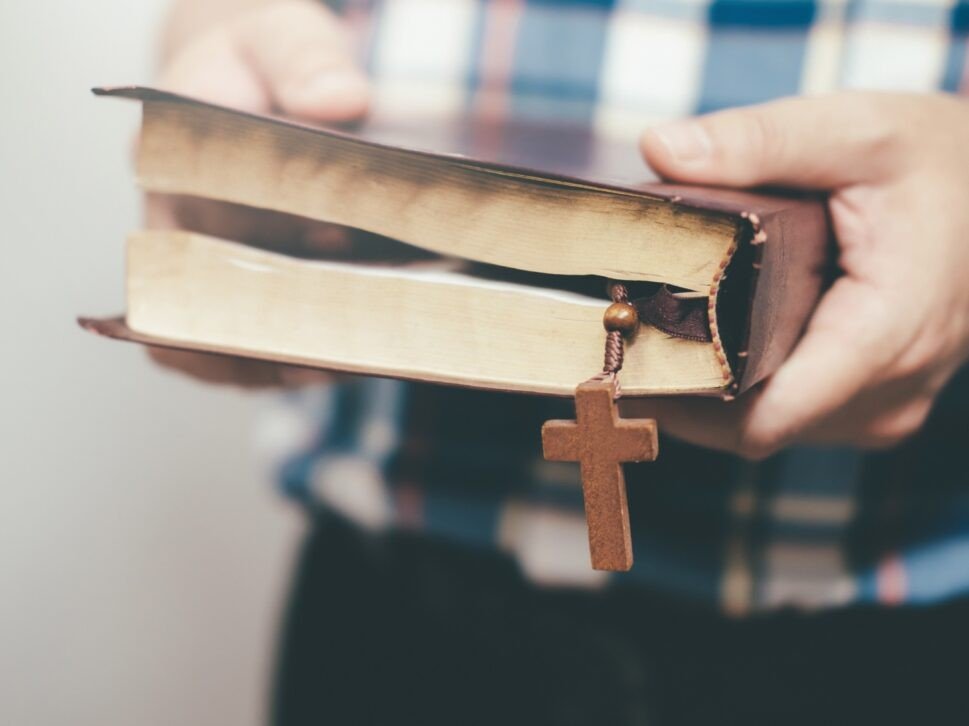Ý nghĩa của Núi Seir là gì?
Người bèn nói: Đức Giê-hô-va đã đến từ Si-na-i, Ngài từ Sê-i-rơ dấy lên trên dân chúng, Chiếu sáng từ núi Pha-ran, Đến từ giữa muôn vàn đấng thánh; Từ tay hữu Ngài phát ra cho họ lửa của luật pháp Ngài.
Phục-truyền Luật-lệ Ký 33:2
Mount Seir is mentioned almost 40 times in the Old Testament. Sometimes, Mount Seir is simply referred to as “Seir.” This is the case in Deuteronomy 33:2, “The Lord came from Sinai and dawned from Seir upon us.” Neither Mt. Seir nor Mt. Sinai is referred to as “mount” in this verse. It is also possible that Mount Seir can refer to the region of Seir, the mountainous area running along the east side of the Valley of Arabah, from the Dead Sea south to the Gulf of Aqaba. It appears that the region got its name from Seir the Horite, one of the early chieftains who controlled the territory (Genesis 36:20–21, 30).
Những người đã kể tên trước đây, trong đời Ê-xê-chia, vua nước Giu-đa, kéo đến đánh các trại quân của chúng, và những người Ma-ô-nít ở đó, tuyệt hết họ, chiếm lấy đất, và ở thay vào cho đến ngày nay; bởi vì tại đó có đồng cỏ để nuôi bầy súc vật của họ.
I Sử-ký 4:41
The term Mount Seir is most often used simply as a geographical marker to explain where something happened. The primary significance of Mount Seir is that this mountainous region was the territory that God gave to Esau: “The Lord had done the same for the descendants of Esau, who lived in Seir, when he destroyed the Horites from before them. They drove them out and have lived in their place to this day” (Deuteronomy 2:22). Because Seir belonged to Esau’s descendants, Israel was forbidden from invading or capturing that territory. God explains in Deuteronomy 2:5, “Do not contend with them, for I will not give you any of their land, no, not so much as for the sole of the foot to tread on, because I have given Mount Seir to Esau as a possession.” This is reiterated in Joshua 24:4, “And to Isaac I gave Jacob and Esau. I assigned the hill country of Seir to Esau, but Jacob and his family went down to Egypt.” In the days of King Hezekiah, some men of the tribe of Simeon attacked the Amalekites who were living in Seir (presumably because they had driven out the Edomites whose land it was), and then the Simeonites lived there after defeating the Amalekites (1 Chronicles 4:41–43).
Khi dân Giu-đa đến tháp canh nơi đồng vắng, nhìn đến đám quân đông đảo, thì thấy những thây nằm sãi trên đất, chẳng có một ai thoát khỏi được.
II Sử-ký 20:24
Second Chronicles 20:23 records another incident: “The Ammonites and Moabites rose up against the men from Mount Seir to destroy and annihilate them. After they finished slaughtering the men from Seir, they helped to destroy one another.” The intent of the Ammonites and Moabites had been to attack Jerusalem where Jehoshaphat was king, but the Lord brought deliverance: “When the men of Judah came to the place that overlooks the desert and looked toward the vast army, they saw only dead bodies lying on the ground; no one had escaped. So Jehoshaphat and his men went to carry off their plunder, and they found among them a great amount of equipment and clothing and also articles of value—more than they could take away. There was so much plunder that it took three days to collect it” (2 Chronicles 20:24–25).
Later, when Edom became a threat to Judah, God did allow Judah to attack (2 Chronicles 25). Later still, Ezekiel records prophecies against Edom, using the name Mount Seir. The final mention of Mount Seir is a warning in Ezekiel 35:15: “Because you rejoiced when the inheritance of Israel became desolate, that is how I will treat you. You will be desolate, Mount Seir, you and all of Edom. Then they will know that I am the Lord.”
Today, Mount Seir (the mountainous region of Seir or the hill country of Seir) is in the country of Jordan. It is known in Arabic as Jibāl ash-Sharāh.
* Kinh Thánh Tham Khảo:
Phục-truyền Luật-lệ Ký 33:2 - Người bèn nói: Đức Giê-hô-va đã đến từ Si-na-i, Ngài từ Sê-i-rơ dấy lên trên dân chúng, Chiếu sáng từ núi Pha-ran, Đến từ giữa muôn vàn đấng thánh; Từ tay hữu Ngài phát ra cho họ lửa của luật pháp Ngài.
I Sử-ký 4:41 - Những người đã kể tên trước đây, trong đời Ê-xê-chia, vua nước Giu-đa, kéo đến đánh các trại quân của chúng, và những người Ma-ô-nít ở đó, tuyệt hết họ, chiếm lấy đất, và ở thay vào cho đến ngày nay; bởi vì tại đó có đồng cỏ để nuôi bầy súc vật của họ.
II Sử-ký 20:24 - Khi dân Giu-đa đến tháp canh nơi đồng vắng, nhìn đến đám quân đông đảo, thì thấy những thây nằm sãi trên đất, chẳng có một ai thoát khỏi được.
Ê-xê-chi-ên 35:15 - Vì mầy đã lấy làm vui về sản nghiệp nhà Y-sơ-ra-ên bị hoang vu, nên ta đãi mầy cũng vậy. Hỡi núi Sê-i-rơ, mầy với cả Ê-đôm, tức cả xứ ấy, sẽ bị hoang vu, và chúng nó sẽ biết ta là Đức Giê-hô-va.
* Bản Dịch theo GotQuestions
* Nếu bạn cảm thấy bản dịch này chưa đúng hoặc chưa phù hợp, xin hãy liên hệ và đóng góp bản dịch mới.
* Nếu bạn cảm thấy bản dịch này chưa đúng hoặc chưa phù hợp, xin hãy liên hệ và đóng góp bản dịch mới.
Nếu bạn thích trang này, xin hãy giúp chúng tôi chia sẽ cho bạn bè:
